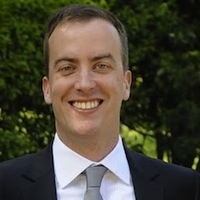9/11 Arraignment #8: Who are those Other People?
Martins has introduced the government lawyers and paralegals, but Nevin now gestures towards others in the courtroom--who, according to the government, are assisting but not appearing as counsel. Does that, he asks, include the row of individuals seated at the rear left? (While he’s asking, we see a less sleepy KSM, who is quietly reading at counsel table.) Martins says that it does, so Nevin asks that these people be identified by name, affiliation, and purpose.
Published by The Lawfare Institute
in Cooperation With

Martins has introduced the government lawyers and paralegals, but Nevin now gestures towards others in the courtroom--who, according to the government, are assisting but not appearing as counsel. Does that, he asks, include the row of individuals seated at the rear left? (While he’s asking, we see a less sleepy KSM, who is quietly reading at counsel table.) Martins says that it does, so Nevin asks that these people be identified by name, affiliation, and purpose. He recognizes some members of the guard force, he says.
The court asks if the government opposes this request, but Martins does not understand it well enough to respond. Nevins, Martins asks, wants to know who the members of the guard force are? Judge Pohl jumps in to clarify: as the court sees it, Nevin wishes all non-attorney members on the government’s side to be identified by name and occupation. Does Martins oppose that request? Indeed, the prosecutor does, at least as far as name identifications go. A general description, though, is agreeable to the government. The court quickly decides not to hear more argument and sets out a path forward. When the day’s proceedings are completed, Judge Pohl instructs, the government will provide its personnel list to the defense. After arraignment, any disputes about the list may be settled by motion.
Nevin interjects, both to explain and to make his objective clear. Earlier, I did not know who was going to be in the courtroom, the lawyer says; otherwise, I would have filed a motion regarding personnel. And, he says, given the treatment his client experienced at the hands some shadowy people, the presence of unidentified personnel could impinge on Mohammed’s ability, and Nevin’s, to go forward. Thus his request for identification now--one which Ruiz and other defense counsel immediately join.
There’s a pause for discussion amongst the prosecutors. Martins rises, and agrees to identify by affiliation only--no names, though. Judge Pohl says that we simply don’t need to toil on this any longer, and that he won’t delay the arraignment over it. Provide the list, he says; then we’ll go from there. He notes that there are all sorts of people in courtroom, and for both sides. Martins throws the defense a bone of sorts: he gestures to some other personnel in the courtroom, whom he identifies as paralegals and representatives of the FBI.
Benjamin Wittes is editor in chief of Lawfare and a Senior Fellow in Governance Studies at the Brookings Institution. He is the author of several books.
Wells C. Bennett was Managing Editor of Lawfare and a Fellow in National Security Law at the Brookings Institution. Before coming to Brookings, he was an Associate at Arnold & Porter LLP.



-final.png?sfvrsn=b70826ae_3)

